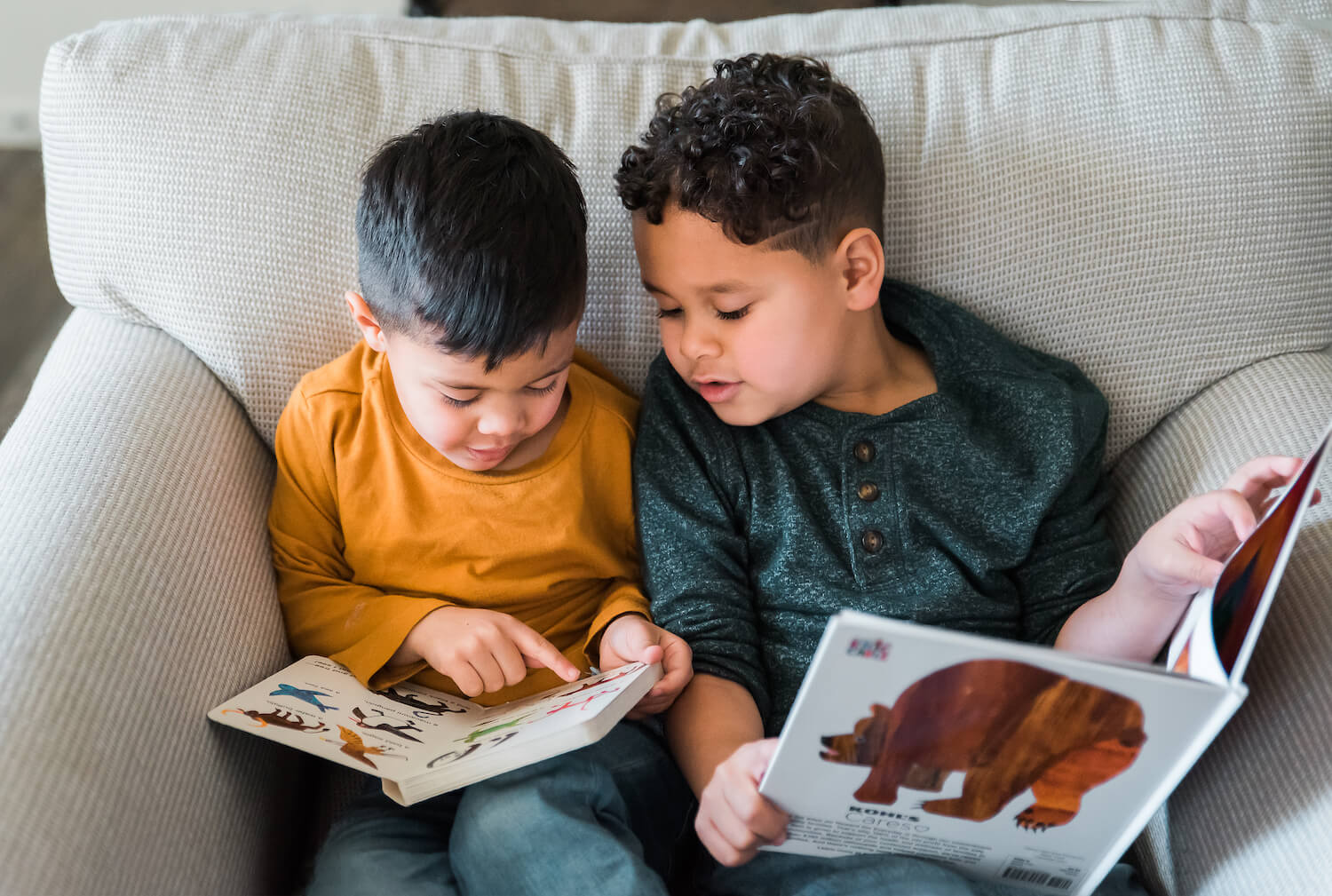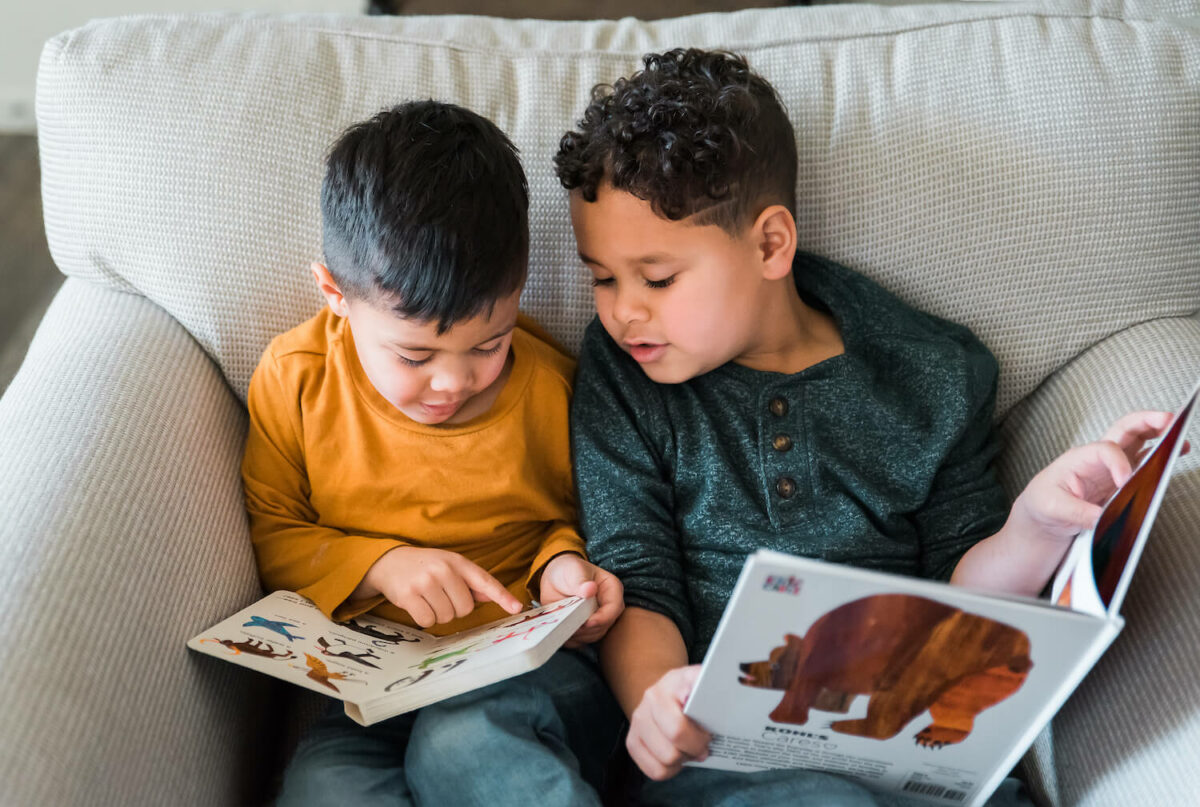
In a waiting room with your toddler? In a restaurant with your baby? Come prepared!
Some places in the world are just not designed with young children in mind. But sometimes, we have to bring them to those places anyway. Whether you’re attending a graduation or killing time at an airport, all families sometimes have to entertain a young child who would rather be doing something else.
Luckily, the experts at the University of New Mexico Family Development Program have some tips, based on years of experience supporting families, raising kids, and hanging out with families in waiting rooms. Read on for some key wisdom we picked up talking with Janelle Garcia Cole and Sam Rodriguez.
Be Prepared
Whether you’re a fictional lion scheming for the throne or a caregiver getting ready for a day of family air travel, preparation is key. Start by bringing the right stuff with you. If all you have with you is your phone, you’ll probably end up handing over your phone and hoping your toddler doesn’t accidentally order 31 cheeseburgers. But if you have some snacks, crayons, or a sturdy book with you, now you’re basically Mary Poppins with a magic bag of goodies. Having the supplies you need will make the whole outing go smoother for your child—and for you! “It doesn’t need to be anything expensive or fancy,” Janelle said. Just remembering to pack things you already have around the house can make all the difference.
You can also get mentally and emotionally prepared by talking with your child about what to expect. Even if your child doesn’t talk yet, you can tell them where you’re going, your expectations for their behavior, and how long you expect it to take. This helps your child feel more ready, and can help you think realistically about what might be stressful for you, and what you need to keep yourself calm. If it calms you to bring your knitting, a book of crossword puzzles, or your fidget spinner, bring those things! And if you expect the day to be particularly challenging, see if you can arrange to have another adult with you so you don’t have to go it alone.
Set Appropriate Expectations
Pediatricians estimate that the average young child has an attention span of 2-3 minutes per year of age. So, an average two-year-old can focus on a task or subject for 4-6 minutes (this is not counting screens, which hold attention for longer at first, but can actually shorten attention spans in the long run). That isn’t very long! It is completely normal for your young child to struggle with sitting still, being quiet, or keeping themselves entertained in a boring place. Instead of thinking of it as bad behavior, Janelle and Sam said families can focus on figuring out what children need to feel comfortable and connected. And remember that even with all the best preparations, sometimes children start screaming on airplanes. Because airplanes are miserable places, and children sense this. Instead of responding with harshness or punishment, respond by helping them identify what is wrong and how you can help.
Set appropriate expectations for yourself, too. Children can tell when their caregivers are getting stressed, and they’ll do better if you do better. “Give yourself grace in those moments,” said Janelle, noting that caregivers are often busy, tired, and under stress. You won’t always do this perfectly, and you may not always have the energy to play “I Spy” in the waiting room. That’s where your Mary Poppins bag can come in handy. If you have a good snack in there, it may even buy you five minutes of quiet.
Take it Outside
You can’t always control your environment, but sometimes you can. If your family is picking a location for a big family dinner, suggest a restaurant with an outdoor area where your child can run around a little while you wait for your food. Or better yet, if you’re planning a more casual get-together, suggest a picnic in the park instead of a restaurant. You’ll have more fun if you don’t have to constantly shush your child, and New Mexico has great year-round picnic weather. Even if your event is indoors, taking a walk outside with your child for some fresh air can calm you both.
Give Yourself the Giggles
Preparation is all well and good, but what if you didn’t prepare? Are you reading this blog post from a doctor’s waiting room, with nothing but your phone and your wits to work with? Don’t worry. You have everything you need, because there’s a part of you that thinks your child is the sweetest, funniest human there ever was. Lean into that. Do something silly that makes you laugh or makes them laugh. Even if you don’t feel like laughing at first, the act of laughing releases stress and makes you both feel closer. (Do not try this strategy if you’re at a graduation or funeral. In that case, hand your child a snack and remember that even Beyoncé has to hold her kids’ snacks at public events).
Ideas for Every Age
Janelle and Sam shared activities and materials for young children at every stage of development:
- All ages: Bring what you need to keep your child (and you!) physically comfortable. That means snacks (or bottles or breastfeeding supplies), comfortable clothes to stay warm or cool, and sunscreen or a hat if you’ll be outside. It’s much harder for children to stay calm if they are hungry or physically uncomfortable.
- Babies: Bring things they can safely chew on. This can include teething toys, sturdy books, or soft toys they can snuggle (and chew). To keep them entertained, try singing songs or telling them stories, playing games like peek-a-boo, or making cool sounds (e.g. jingling your keys).
- Toddlers: Bring soft or sturdy books you can look at together, and toys that are interesting to touch, squeeze, or shake. Kids at this age like seeing their reflection, and you can make a “crinkly mirror” with a deflated mylar balloon or an inside-out chip bag. Older toddlers may be able to sing along or do songs with hand motions (e.g. The Itsy Bitsy Spider). If there’s room to get physical, use the space around you for challenges like crossing a tiled floor without stepping on a crack or only stepping on tiles of a certain color.
- Preschoolers: As kids get older, you can let them choose a favorite toy or coloring book to bring on outings. This gives them a sense of choice and control, and involves them in preparing for the day. These kids are old enough for a good game of “I Spy,” or activities like finding all the circles in a room. You can also do a lot with an empty plastic water bottle. Fill it with water and glitter before you leave the house, and kids will be mesmerized by the floating sparkles. Fill it with beads or small objects, and kids can sort them or take them in and out of the bottle. Now they’re working on their fine motor skills, and you maybe even get a chance to look at the menu.

Want more ideas like this?
Subscribe to Bright By Text to get more free tips and resources for your child’s journey, right to your phone!

